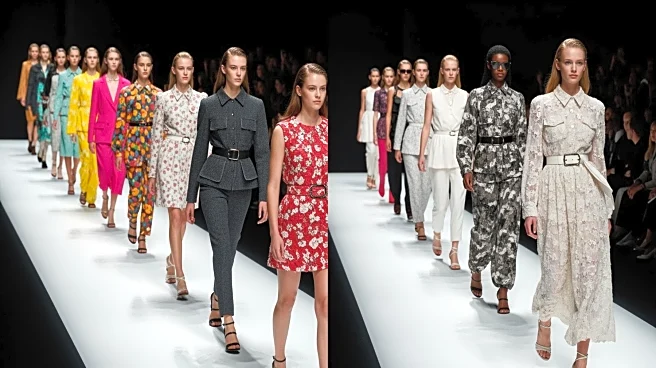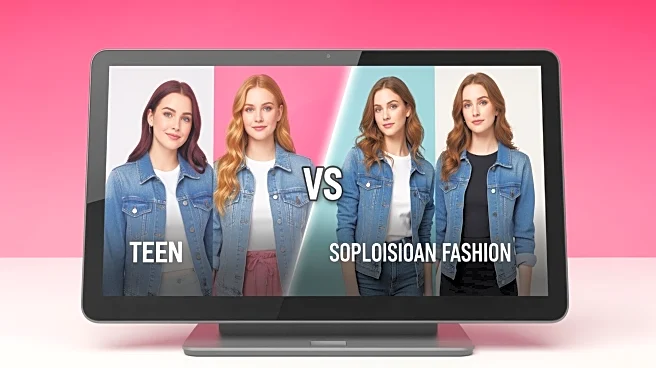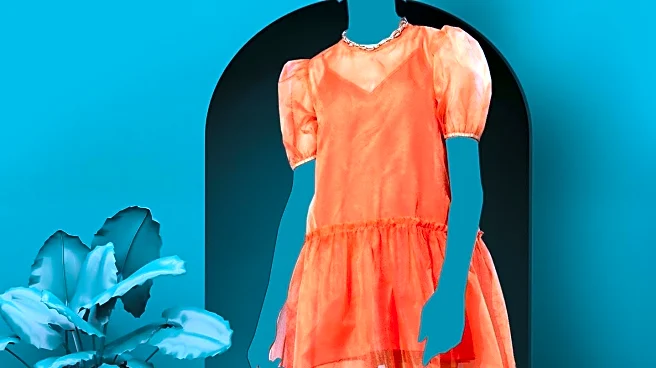What's Happening?
Vogue has released an article focusing on the diverse textures that define winter fashion. The piece emphasizes the importance of materials such as cashmere, corduroy, velvet, and faux fur in creating
a dynamic and personalized winter wardrobe. The article suggests that these textures not only provide warmth but also add depth and interest to classic silhouettes. Vogue's Camilla Nickerson is noted for her innovative styling, which showcases how everyday dressing can be transformed through the use of varied textures. The article also hints at upcoming spring/summer 2026 trends, which will continue to explore texture through materials like fiberglass and iridescent jacquards.
Why It's Important?
The focus on textured fabrics in winter fashion highlights a shift towards more tactile and visually interesting clothing options. This trend is significant for the fashion industry as it encourages consumers to invest in high-quality, versatile pieces that can be styled in multiple ways. The emphasis on texture also reflects a broader movement towards sustainable fashion, where the quality and longevity of materials are prioritized. For consumers, this trend offers an opportunity to express individuality through unique combinations of textures, while for designers, it presents a chance to innovate and push the boundaries of traditional fashion norms.
What's Next?
As the fashion industry continues to embrace textured fabrics, consumers can expect to see more innovative uses of materials in upcoming collections. Designers may experiment with new combinations and applications of textures, potentially leading to a broader acceptance of unconventional materials in mainstream fashion. Retailers might also focus on marketing these textured pieces as investment items, appealing to consumers' desire for both style and sustainability. Additionally, the trend could influence other sectors, such as interior design, where texture plays a crucial role in creating inviting and personalized spaces.
Beyond the Headlines
The emphasis on texture in fashion could have cultural implications, as it encourages a more thoughtful approach to clothing consumption. By valuing the quality and craftsmanship of garments, consumers may become more conscious of their purchasing decisions, leading to a reduction in fast fashion's environmental impact. This shift could also inspire a greater appreciation for artisanal techniques and traditional craftsmanship, fostering a deeper connection between consumers and the stories behind their clothing.











